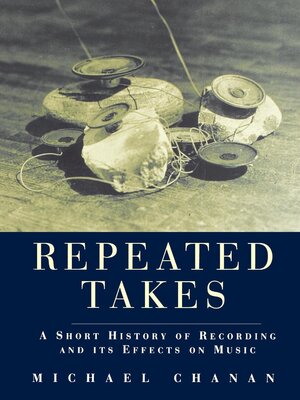
Sign up to save your library
With an OverDrive account, you can save your favorite libraries for at-a-glance information about availability. Find out more about OverDrive accounts.
Find this title in Libby, the library reading app by OverDrive.



Search for a digital library with this title
Title found at these libraries:
| Library Name | Distance |
|---|---|
| Loading... |
Repeated Takes is the first general book on the history of the recording industry, covering the entire field from Edison's talking tin foil of 1877 to the age of the compact disc.
Michael Chanan considers the record as a radically new type of commodity which turned the intangible performance of music into a saleable object, and describes the upset which this caused in musical culture. He asks: What goes on in a recording studio? How does it affect the music? Do we listen to music differently because of reproduction?
Repeated Takes relates the growth and development of the industry, both technically and economically; the effects of the microphone on interpretation in both classical and popular music; and the impact of all these factors on musical styles and taste. This highly readable book also traces the connections between the development of recording and the rise of new forms of popular music, and discusses arguments among classical musicians about microphone technique and studio practice.
Michael Chanan considers the record as a radically new type of commodity which turned the intangible performance of music into a saleable object, and describes the upset which this caused in musical culture. He asks: What goes on in a recording studio? How does it affect the music? Do we listen to music differently because of reproduction?
Repeated Takes relates the growth and development of the industry, both technically and economically; the effects of the microphone on interpretation in both classical and popular music; and the impact of all these factors on musical styles and taste. This highly readable book also traces the connections between the development of recording and the rise of new forms of popular music, and discusses arguments among classical musicians about microphone technique and studio practice.







